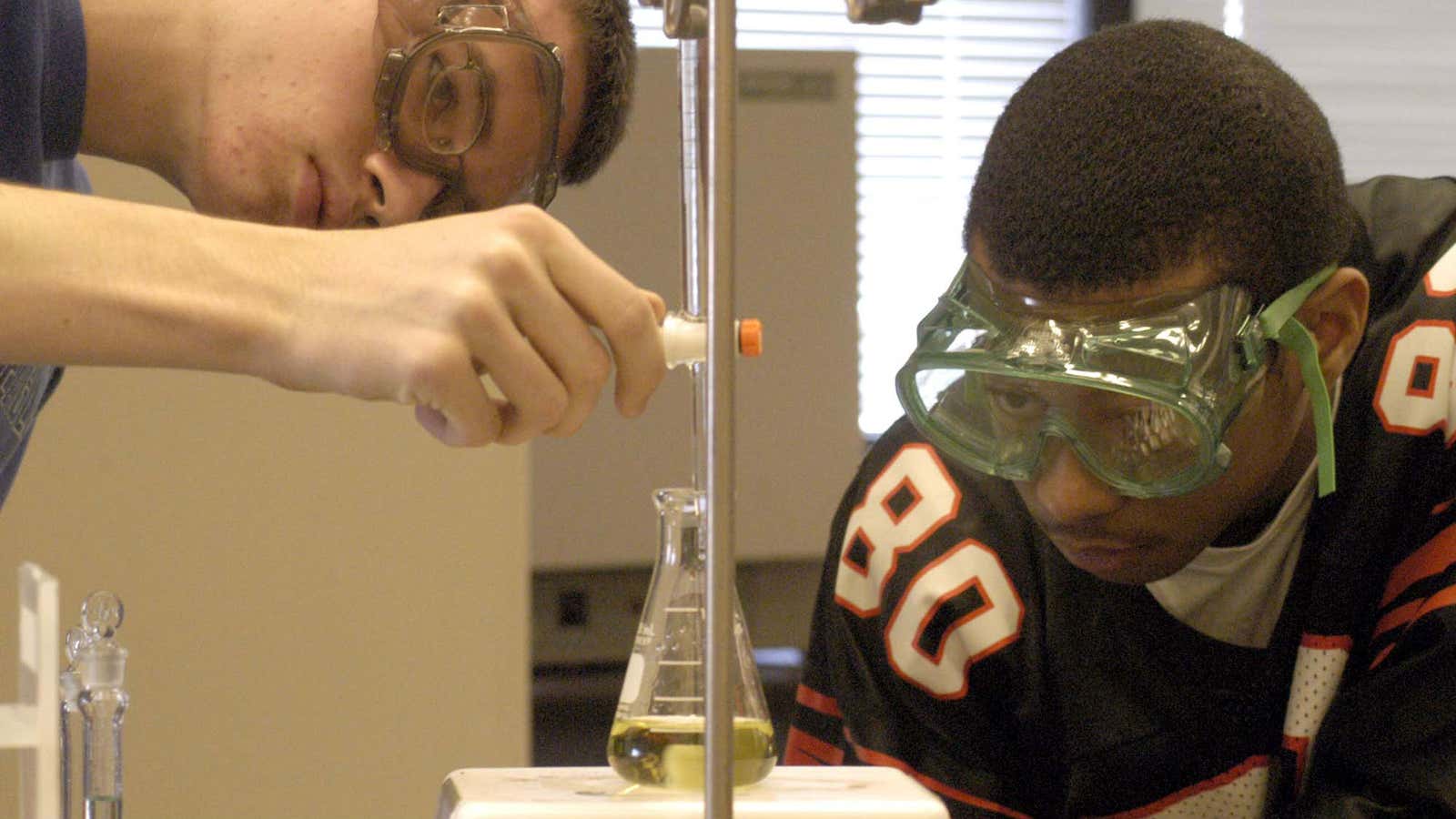Teachers and scientists know that sometimes it’s easier to use pictures to explain complicated concepts rather than words.
Now some teachers will get an extra hand in explaining complicated scientific concepts from the creator of the beloved web comic xkcd. Houghton Mifflin Harcourt (HMH), a Boston-based publishing company, announced this week that illustrations from Randall Munroe, a former NASA roboticist, will be featured in science textbooks this fall.
Munroe’s work is characterized by simple, stick-figure drawings and comprehensible, oftentimes sardonic, explanations of various scientific and mathematical concepts. But he also developed a strong following with the funny, endearing and sometimes quite profound way he has tackled romance, language, and growing pains. In addition to the comics he posts regularly to his website, he has also published two books with HMH, including “What If?: Serious Scientific Answers to Absurd Hypothetical Questions” and “Thing Explainer: Complicated Stuff in Simple Words,” which features similar line drawings and uses only the thousand (“ten hundred”) most common words in English to explain difficult scientific concepts.
“I love learning about the science that governs the universe around us and want to share the delight of discovering how things work and why,” Munroe said in a press release.
Munroe’s drawings in these textbooks, which were formerly published in “Thing Explainer,” tackle concepts like the human anatomy, plate tectonics, and even the ways in which plants and animals repopulate an area that has been wiped out by ecological disasters, according to the New York Times.
Michael Ryan, a former Colorado high school chemistry and geology teacher, told Quartz that illustrations often engage students in ways that words alone can’t. “You can’t go wrong when you have illustrations,” he said, adding that using animations and videos in his chemistry class, for example, “was really helpful in helping students understand how gases behave.” Besides, he added, “kids love comics.”
